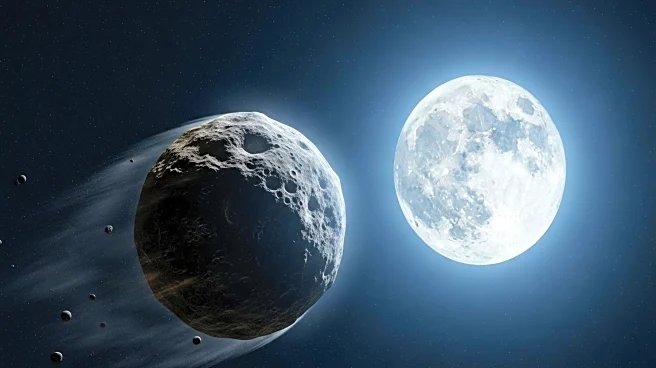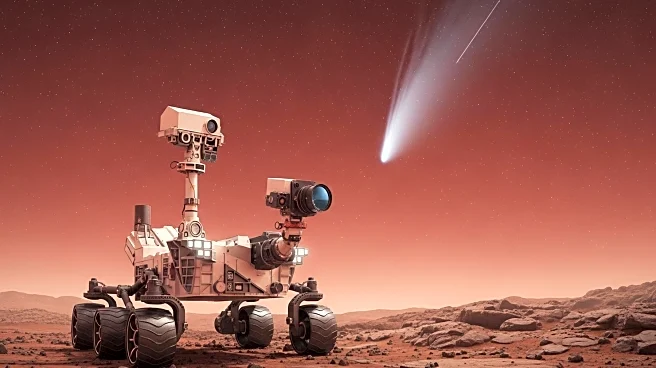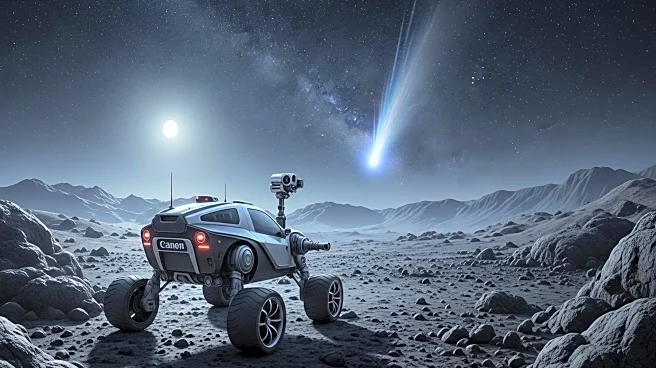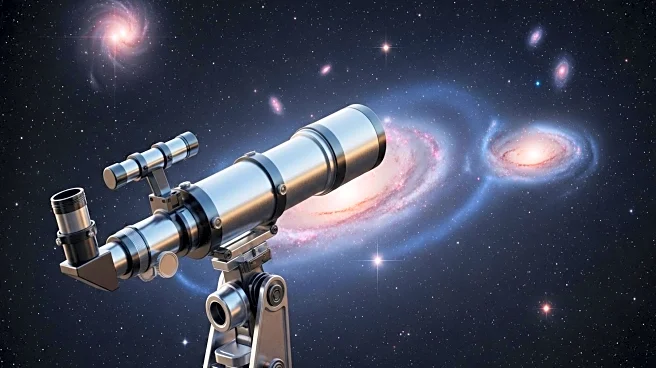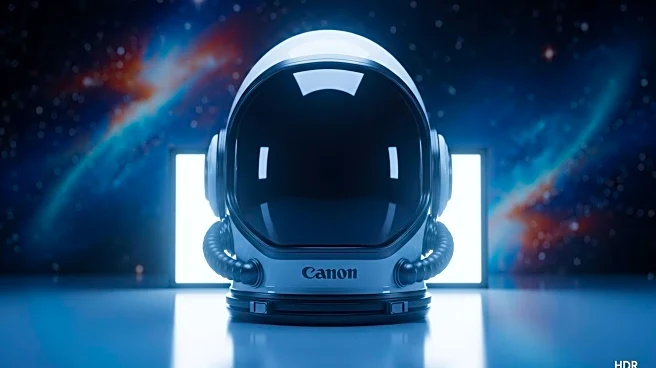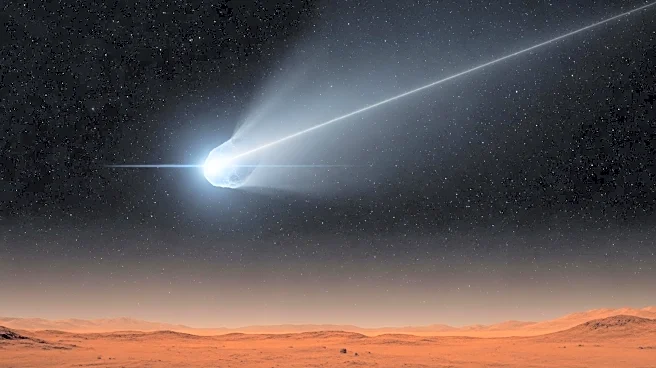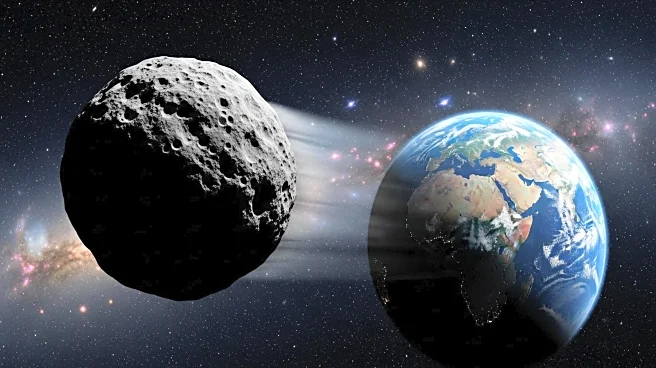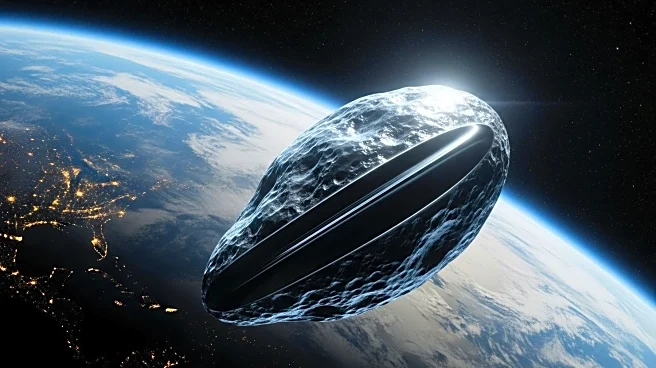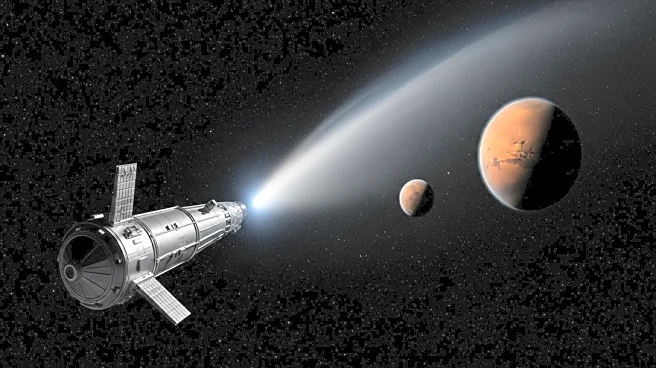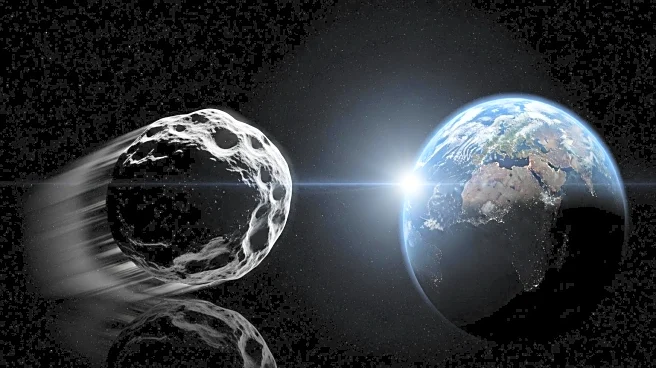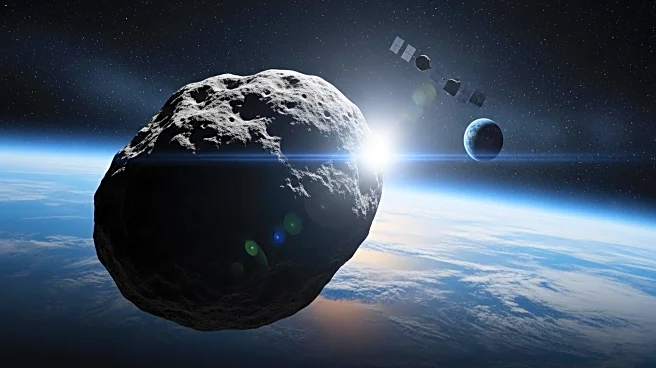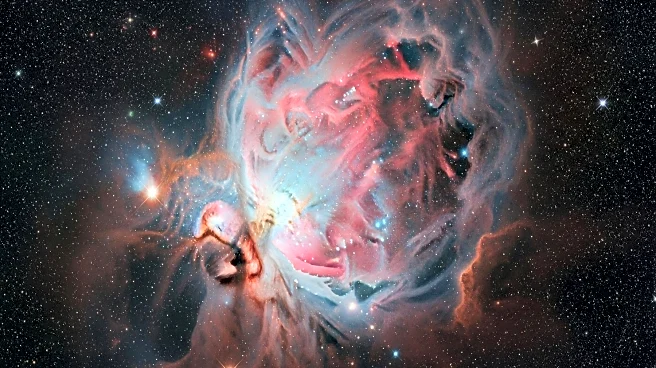What is the story about?
What's Happening?
NASA has identified asteroid 2024 YR4, a space rock measuring between 53 and 67 meters in diameter, as a potential threat to the Moon. The asteroid was initially thought to have a 3.1% chance of colliding with Earth in 2032, prompting crisis simulations among scientists. However, recent calculations suggest it is more likely to collide with the Moon, posing no direct threat to Earth. The James Webb Space Telescope (JWST) has been instrumental in tracking this asteroid, offering a rare opportunity to test scientific theories on impacts and celestial behavior. If the asteroid strikes the Moon, it could create a dramatic crater and provide valuable scientific insights into space impacts.
Why It's Important?
The potential collision of asteroid 2024 YR4 with the Moon highlights the importance of planetary defense strategies and the role of advanced telescopes like the JWST in monitoring space threats. While the impact poses no danger to Earth, it offers a unique chance for scientists to observe crater formation and meteor showers, enhancing our understanding of celestial dynamics. This event underscores the need for continued vigilance in tracking near-Earth objects and refining impact mitigation techniques. The discovery has also served as a comprehensive rehearsal for planetary defense, involving risk assessment and public communication.
What's Next?
Asteroid 2024 YR4 will become visible again in 2028, allowing further study of its composition and trajectory. Scientists will closely monitor its path during a close approach in the 2030s, continuing NASA's efforts to safeguard Earth from potential space threats. The collision with the Moon could lead to new scientific discoveries, prompting further research into impact dynamics and celestial behavior. The event raises questions about our readiness to handle future space threats and the steps needed to enhance planetary defense capabilities.
Beyond the Headlines
The prospect of asteroid 2024 YR4 colliding with the Moon challenges our perception of celestial stability and highlights the importance of ongoing space monitoring. It raises broader questions about our preparedness for unforeseen impact events and the potential for new discoveries in space exploration. The situation emphasizes the need for international collaboration in developing effective planetary defense strategies and advancing our understanding of the universe.
AI Generated Content
Do you find this article useful?
